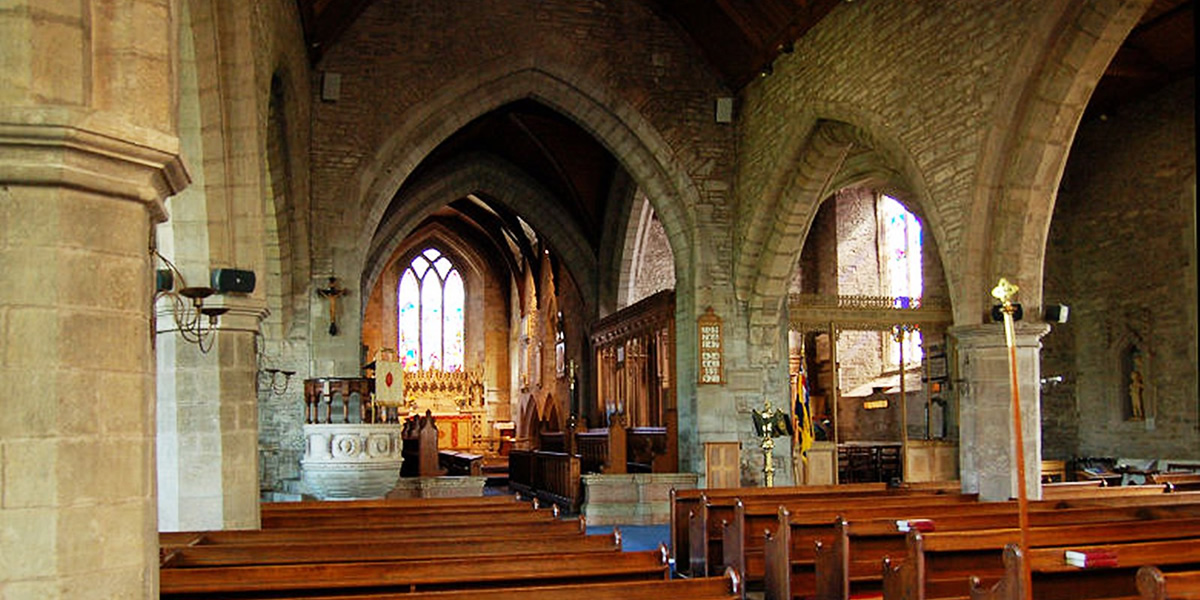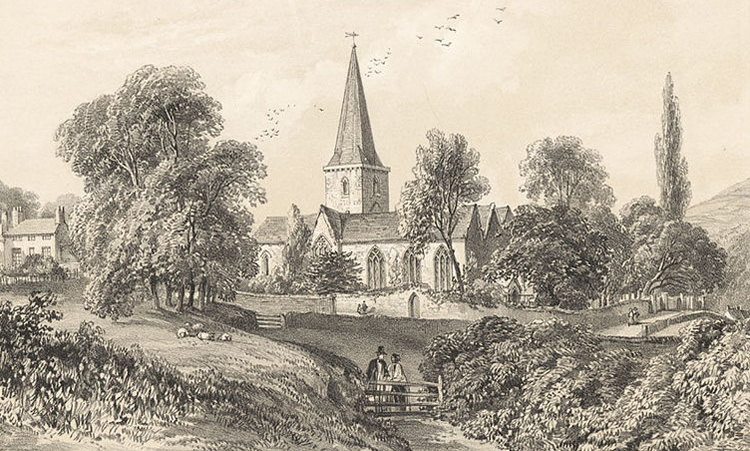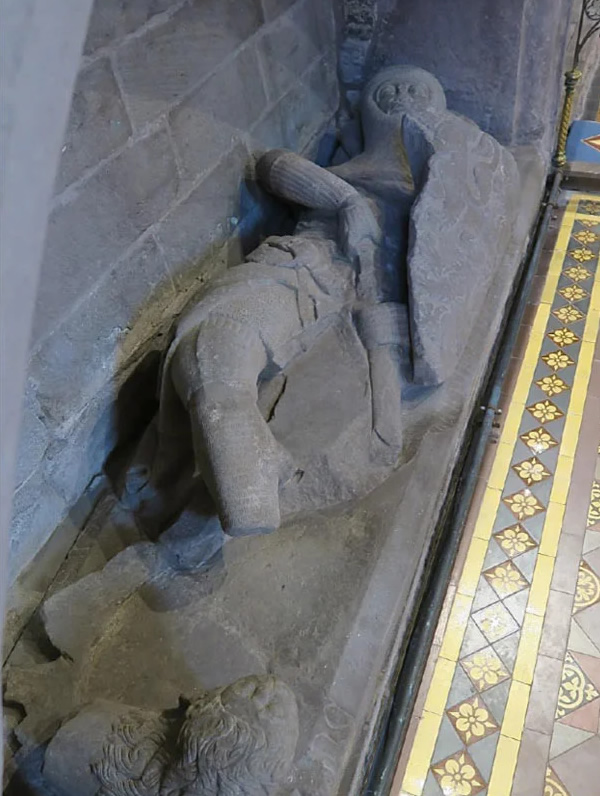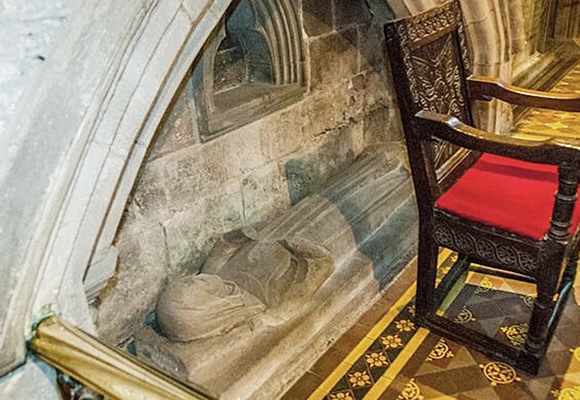The History of St. Edmund’s Church, Crickhowell
St. Edmund’s Church, nestled in the picturesque town of Crickhowell in southeastern Powys, Wales, stands as a testament to medieval architecture and religious dedication. Constructed in the early 14th century, the church venerates Saint Edmund, the king and martyr, a dedication that has persisted since its foundation in 1303. Historical documents, including a 1576 will registered in Brecon, affirm its longstanding identification as the Parish of Saint Edmund, earning it the distinction of a Grade II* listed building.
Architectural Evolution and Features
Originally, St. Edmund’s Church boasted a more expansive structure than seen today. An inspection in the mid-18th century revealed its dilapidated condition, leading to the 1765 decision to dismantle the two side aisles. Presently, its cruciform design includes a chancel, nave, two transepts, and a unique shingled spire—remarkable as the only one in the county—housing five bells. The church extends 112 feet 11 inches from east to west and 47 feet 8 inches from north to south, with the nave measuring 20 feet wide and the chancel 17 feet.
The church retains its historical rood-loft, repurposed as a belfry. The south transept, known as the Rumsey Chapel, traces its origins to an estate owned by the Rumsey family, while the north transept is designated as the Gwernvale Chapel.
Despite modernisations that have obscured many of its ancient characteristics, a notable lancet window of three lights adorns the west end above the main entrance, preserving a glimpse into its past. The font, dated 1668, commemorates the wardens of the time. Historical emblems of various trade companies once adorned the aisles, indicating the church’s community significance.
An illustration of the church from 1865.
Monuments of Note
Within the chancel’s south wall, an arch shelters the effigy of a knight, once depicted with crossed legs, clad in mail armor and resting upon a stone altar monument. The heraldic shield suggests a Pauncefote (or Pauncefoot) lineage, although the accompanying inscription remains undeciphered. Contrary to earlier beliefs that such figures symbolised Knights Templars or crusaders, contemporary understanding has evolved. Mirroring this monument, the north wall features an effigy of a female, likely the knight’s consort, dressed in period attire, with entrances to these graves originally from the church’s exterior.
Noteworthy is the altar monument on the chancel’s north side, crafted from black and white marble and enclosed by iron rails. It displays alabaster effigies of Sir John Herbert of Dan y Castell and his lady, Joan, along with representations of Sergeant Lehunt and his wife, commemorating their lives and contributions to the church’s history.
Grounds and Heritage
The surrounding churchyard harbors memorials of local significance, including the tombstone of Thomas Havard of Dan y crug, who passed in March 1762, and Edward Williams, who died in November 1754. A notable tombstone marks the internment of Samuel Walbeoffe in 1750, adding layers to the tapestry of Crickhowell’s community history.
Recognised for its architectural and historical value, St. Edmund’s Church was granted a Grade II* heritage listing in 1963, ensuring its preservation for future generations to explore and appreciate the rich history of Crickhowell and its spiritual heritage.
Sir Grimbald’s effigy depicts him in chainmail, holding a shield adorned with the Pauncefote family crest.
Lady Sybil is portrayed in a modest dress, her hair veiled, and her hands are absent—though traces suggest they were once poised in prayer. The missing hands have been linked to the widely debunked tale of her sacrificing her right hand to free her husband from captivity during the Crusades. Prior to their restoration, both effigies bore the marks of time: Sir Grimbald’s was fragmented and missing pieces, while Lady Sybil’s had fared somewhat better, sustaining less damage.




